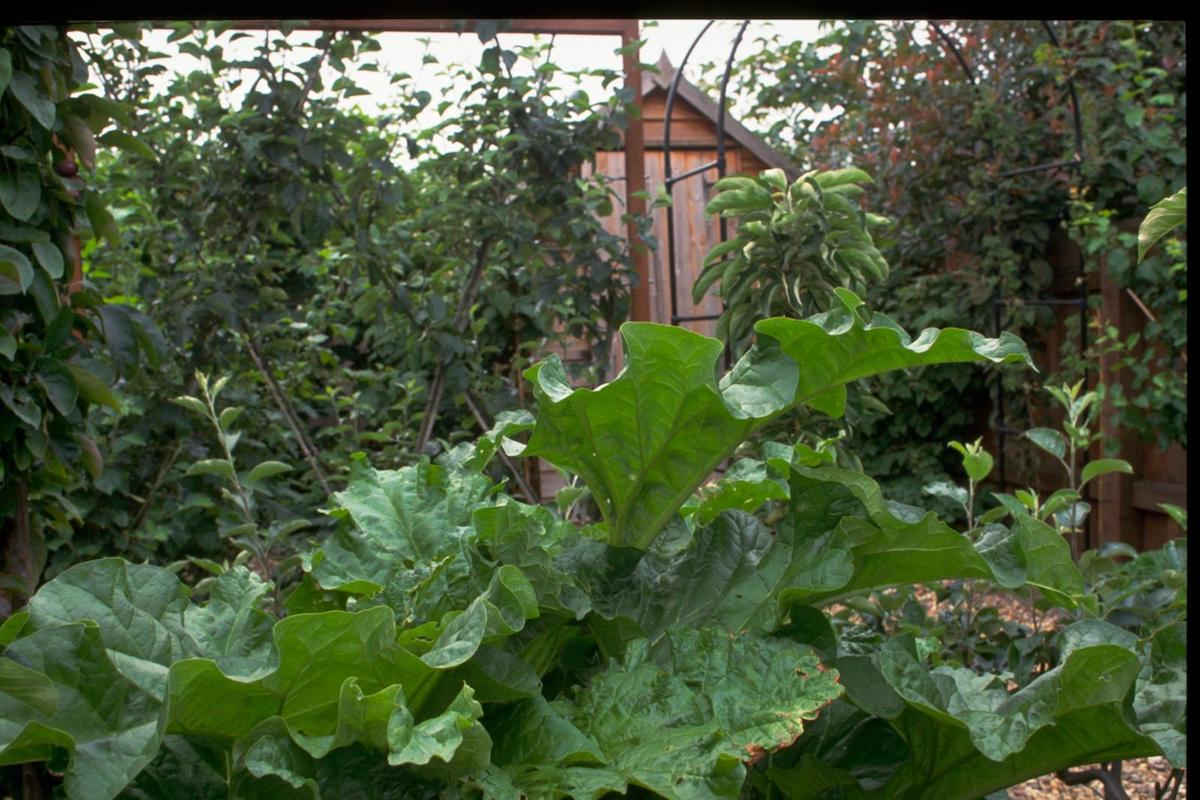Jeremy Hobson investigates the Rhubarb Triangle
Where is rhubarb grown in the UK?
Much of it is Yorkshire rhubarb from what is known as ‘The Rhubarb Triangle’, an area between Wakefield, Leeds and Bradford. The location of the Rhubarb Triangle is no casual accident; rhubarb thrives in the cold, damp, loamy soil. For commercial marketing purposes, the positioning of the Rhubarb Triangle is perfect. In the days when produce was transported by railway, it was at the confluence of lines that went west to Manchester and Liverpool, east to Hull, north to Scotland (where rhubarb has apparently always been popular) and south to London’s Covent Garden market. Now that transport is by road, motorway intersections perform the same functions. Sadly, where in the days of the railways there were as many as 200 growers within the Rhubarb Triangle, there are probably only a dozen still in existence.
Is rhubarb native to the UK?
The plant originated in Siberia and has been known in parts of Asia for many centuries. Rhubarb was brought into Europe in the 15th century but it was not until the late 1700s that it began to be seen as a food source.
Rheum, the name by which the genus is known under the Linnaean system, is thought by some to be derived from the old french rubarbe.
Others suspect that it may have come from the Greek rheo, which means “to flow” and is presumably a reference to the plant’s laxative properties when ingested. Why the word rhubarb has been used by actors to simulate conversation during a crowd scene on stage, probably has nothing to do with the plant; it’s likely to be a corruption of “Rhu-bar-ba, rhu-bar-ba”, which was used in the theatre during Shakespeare’s time.

Rhubarb has scientifically proven medicinal qualities
Medicinal properties
Rhubarb has been used for medicinal reasons since ancient times. It was first grown in Britain for scientific purposes in the mid 1700s, probably at the Chelsea Physic Gardens and certainly at Edinburgh’s Botanical Gardens. It’s already proven to lower cholesterol, help prevent deep vein thrombosis and stimulate the body’s metabolic rate (read more scientific evidence on rhubarb here). Its use as a laxative is well known and the subject of many jokes. However, if you want to cleanse your saucepans rather than your internal tracts, look no further than boiling rhubarb stalks in a little water; the resultant acidic mix shines even the dullest of pan interiors in a matter of minutes. Alternatively, it can apparently be made into an organic insecticide against leaf-eating insects. Boil the rhubarb leaves in a few pints of water for 20 minutes, strain the liquid and then add soap flakes. (Find more of The Field’s recipe for rhubarb crumble here.)

Rhubarb is always pulled, never cut
Forcing rhubarb
Rhubarb crowns are covered to prevent light reaching them, which encourages the plans to make early growth – this is known as forcing rhubarb. (Read The Field’s guide to rejuvanating old rhubarb here.)
As a food source, rhubarb has had its ups and downs. In Victorian times, no self-respecting gardener would be without at least a couple of clumps of it in some corner of the vegetable patch. The wealthy would force theirs each spring with specially constructed rhubarb domes, while the ordinary grower found that he could achieve the same effect with the use of old chimney pots, upturned dustbins and galvanised buckets.

Rhubarb forcing pots
Yorkshire Rhubarb Triangle growers
Possibly the best known of these is Janet Oldroyd Hulme, considered by many to be the “High Priestess of Rhubarb“. Although not the family business until 1942, rhubarb was grown by Janet’s grandfather a decade earlier. It is perhaps due to the efforts of Janet’s father Ken that the business is in today’s healthy state. “We never saw Dad when we were young,” says Janet. “He was always out in the fields, cleaning the flues for heating systems in the forcing sheds and meeting people to check out growing areas. He was also involved in setting up the Yorkshire Rhubarb Growers’ Association.”
Rhubarb varieties grow at varying rates, it generally takes three to four weeks to bring the roots on to the point where the delicate stems can be pulled – they are never cut for fear of damaging the parent plant. Grown in the dark to keep the stems blanched and straight, rhubarb is harvested by candlelight by professional growers to avoid strong light which might damage the plant. David Westwood of D Westwood & Son starts his harvest in December, but February is the main cropping season, which lasts for four to six weeks, after which there is a marked deterioration in plant and crop quality. The roots are then rotovated back into the soil.
Rhubarb growing has become a tourist attraction, as is the Rhubarb Triangle. It is, at the right time of year, possible to take a guided tour around the forcing sheds on Janet’s farm. Visitors describe the experience as being “cathartic and calming”, “like being in a flotation chamber”, and, “amazing… if you’re quiet, you can hear the plants growing”.

This article was originally published in 2014 and has been updated.





